Can You Use Bleach to Clean the Coffee Maker? (What Else Can I Use?)
If you’re like me, you start every day with a hot cup of coffee, but don’t think much about the machine that provides it until it stops working. The best way to keep your coffee maker in good condition and producing the best cup of coffee possible is to to keep it clean – but how? Can you use bleach to clean the coffee maker?
It is possible to clean glass or plastic coffee makers with a solution made of 1 teaspoon of bleach and one gallon of water. This cleaning solution can be run through the coffee maker, although it will then need to be flushed thoroughly to ensure no bleach remains. Vinegar, lemon juice, and baking soda are safer, equally effective, cleaning methods.
Keep reading to find out if it’s possible to clean your specific coffee maker with bleach, what you should do to ensure the process is as safe as possible, and alternatives to bleach that will sanitize your coffee maker without serious safety concerns.
Can you use bleach to clean the coffee maker?
Bleach is a corrosive cleaner that is frequently used in many homes to remove stains from white clothes or a bathroom sanitizer (think the ubiquitous yellow canister of Clorox wipes), but can it also be used safely to clean your coffee maker?
Cleaning with bleach is only safe if you properly dilute it with water first. Undiluted bleach can destroy the coffee maker, create deadly chlorine gas when boiled, and leach into your coffee if not fully cleaned from the coffee maker. If you’re unsure of how to safely dilute bleach for cleaning, consider a different method.
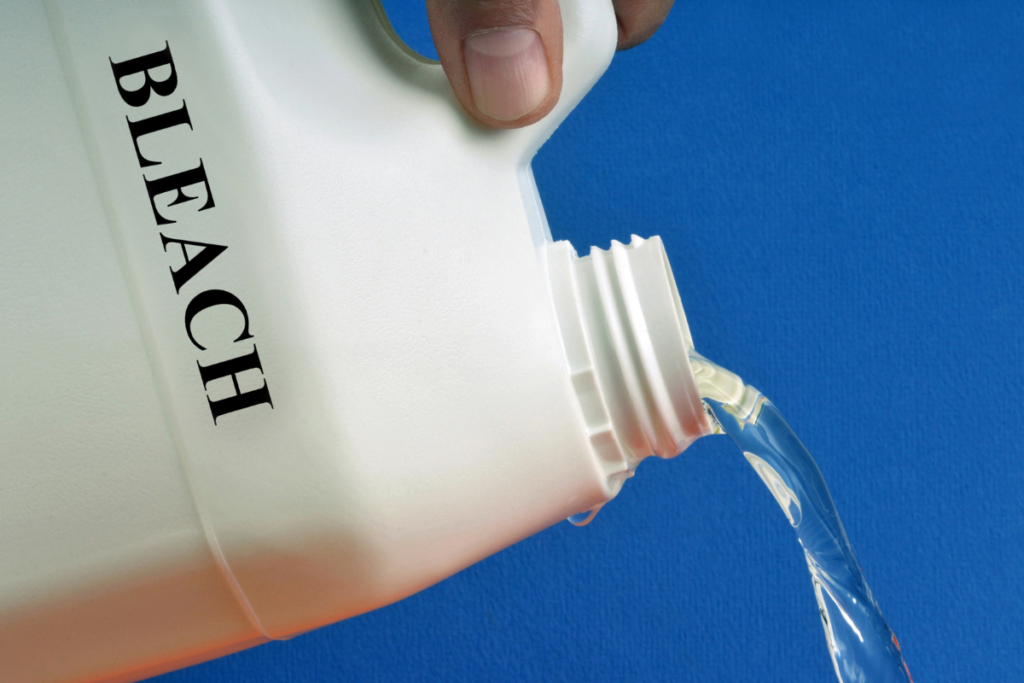
Household bleach, such as plain Clorox, should be mixed with water to produce a sanitizer of 50-100ppm. Restaurants use Chlorine test papers to ensure the concentration is correct, but you can use one teaspoon of bleach to one gallon of room temperature water.
When working with undiluted bleach, be sure to do some in a well-ventilated area while wearing gloves.
Fortunately, there are also less severe ways to clean your coffee maker that don’t risk damaging it or poisoning the next person looking for a cup of joe. Better options for cleaning your coffee maker include vinegar, baking soda, and lemon juice.
Top tip: The ppm in 50-100ppm stands for “parts per million” and means if you had 1 liter of water, there would be just 1mg of chlorine in it, or 1 in 1 million.
Can you clean a drip coffee maker with bleach
Despite the steady use of single-serving coffee makers and the rise of cafe-style coffee at home, automatic drip coffee makers remain the most popular type of coffee machine globally.
The brewing portion of a drip coffee maker can be cleaned using a diluted bleach solution, although it is generally safer to use vinegar, baking soda, or lemon juice for the task.
If you choose to clean your drip coffee maker with bleach, make sure you follow the directions below carefully and dry it completely before the next use.
Can you clean a coffee pot with bleach
While cleaning the drip coffee maker itself with bleach is not recommended, even Clorox recommends cleaning your coffee pot with its everyday disinfecting bleach.
Remove stubborn stains from your coffee pot by soaking it in a solution of 1 teaspoon bleach per 1 gallon of water for 2 minutes. Rinse thoroughly and allow to air dry completely.
If you notice any white residue after drying, that’s chlorine residue. You can either repeat the soaking process or wash the pot thoroughly to remove it.
Can you clean a Keurig with bleach
Keurig makes a variety of coffee makers, most of which use their signature coffee pods – “K-cups” – to brew a single cup of coffee.
The brand’s cleaning directions focus entirely on descaling. While this is important for removing calcium buildup, it won’t help with oils or deep cleaning.
To completely clean a Keurig coffee maker, you can use a diluted bleach solution, but vinegar, baking soda, or lemon juice will work just as well without the risks.
No matter which method of cleaning you choose, make sure to remove the filter before you begin.
Wondering what to do if your Keurig coffee maker “descale” light won’t go off?
Can you clean an electric percolator with bleach
An electric percolator is a coffee maker that starts with water in its base and coffee grounds in a basket near the top. As the water boils, the steam creates a vacuum, drawing water up through the central tube. This water drips over the grounds and produces coffee.
Basic cleaning is a relatively simply process as most pieces of an electric percolator can go through the dishwasher or simply be rinsed out, but what happens when it’s time for a deep cleaning?
Never clean an electric percolator (or anything aluminum, for that matter) with bleach as it will corrode the metal.
Instead, run three consecutive cycles in your percolator:
- Baking soda and water
- Vinegar and water
- Freshwater
After that, let the percolator and all parts dry and it’s ready to use!
Can you clean a French Press coffee maker with bleach
Your French Press is perfect if you want a bold, flavorful cup but don’t mind waiting. When it comes time to clean, what do you do?
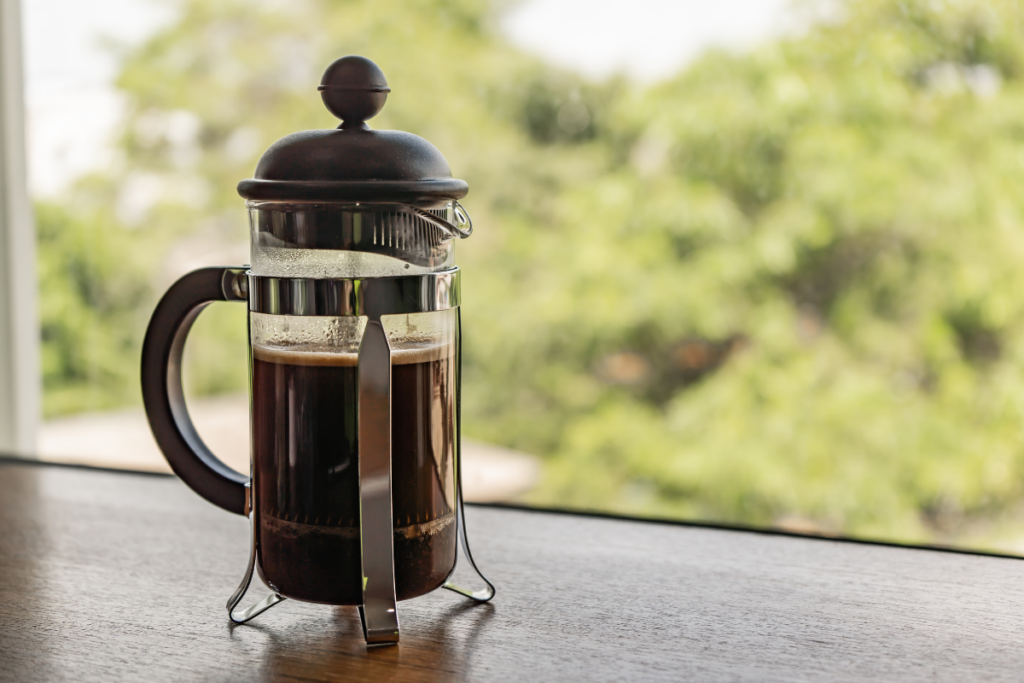
Never use bleach when cleaning a French Press coffee maker. The bleach may damage the metal components.
Instead, you should completely disassemble the plunger mechanism and wash everything in hot, soapy water.
Can you clean an AeroPress coffee maker with bleach
An AeroPress is often compared to a French Press given that both coffee makers are manual coffee makers and have a similar construction. However, AeroPress coffee makers are plastic. (There are actually a variety of differences, but this is the only one that affects cleaning!)
AeroPress coffee makers can be cleaned using a diluted bleach solution. As with most other types of coffee makers, you may prefer to use vinegar as a health and safety precaution.
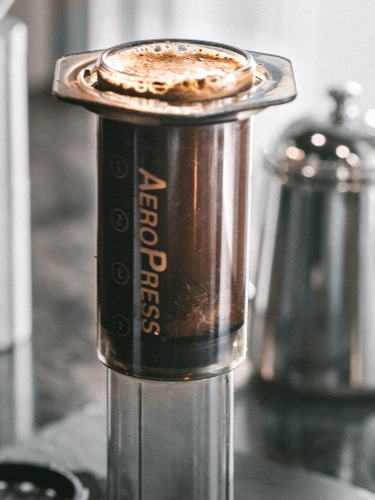
No matter which cleaning method you choose, rinse the coffee maker thoroughly and allow it to dry completely before brewing your next cup.
Can you clean a cold brew coffee maker with bleach
Whether you have a cold brew coffee machine or simply a carafe ultra-fine strainer basket, you’ll find yourself needing to clean your cold brew coffee maker occasionally.
You can use diluted bleach to clean your cold brew coffee maker as long as it doesn’t have any metal components.
While it’s not a hard and fast rule, this will typically mean you can follow the directions below to clean your plastic cold brew machine and the brewing carafe, but you’ll need to find another method for the basket insert.
Can you clean an espresso machine with bleach
Your espresso machine was no doubt an investment and you want to keep it in good working order!
Avoid using bleach to clean your espresso machine. Go for a vinegar-water solution instead.
Depending on the type of machine you have and how often you use it, you may want to consider picking up a professional cleaner to keep your coffee maker in good condition.
Can you clean a moka pot with bleach
A Moka pot brews coffee by using steam to push hot water through coffee grounds, producing a concentrated, robust coffee. It’s typically considered to be the strongest coffee you can brew at home without an espresso machine.
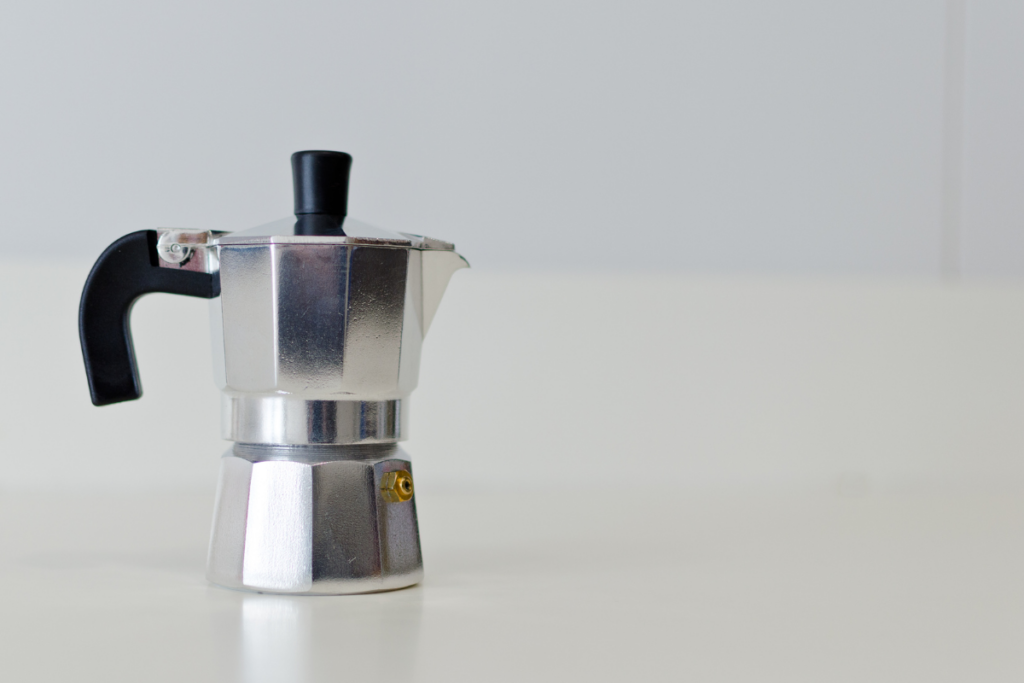
Use care when deciding if it’s safe to clean your Moka pot with diluted bleach. Most Moka pots are made of aluminum or stainless steel, although some versions are ceramic; avoid using bleach on metal as it will cause it to corrode.
Moka pots should be washed with hot water – not soap! – and scrubbed gently with a sponge after each use, then deep cleaned twice a year. To deep clean, disassemble and soak all the pieces in a solution of 1 part vinegar to 2 parts water for 30 minutes. Rinse thoroughly and allow to dry completely before the next use.
How to safely clean a coffee maker using bleach
Depending on your coffee maker, it is possible to use a diluted bleach solution for deep cleaning, although it is never the best method in a home setting.
To safely clean a coffee maker using bleach:
- Confirm that all the pieces you’ll be cleaning are glass or plastic – Bleach should not be used on metal components.
- Prepare the cleaning solution – In a well-ventilated area and wearing gloves, combine 1 teaspoon of bleach with 1 gallon of room temperature water.
- Run a brew cycle – This will vary depending on the type of coffee maker you have, but you should treat the cleaning solution the same way you would water during a regular brew cycle. Set up the coffee maker in the same way you normally would, just without any metal or paper filters or coffee grounds (obviously).
- Drain the coffee maker immediately – Once the pot (or carafe) is full, switch off the coffee maker and pour out the “brewed” cleaning solution. Don’t be surprised if there are brown bits floating in the cleaner – this means it’s working!
- Repeat until all the cleaning solution has been used – This will vary depending on the size of your reservoir, but you should use up the entire gallon of cleaning solution. The resulting water should look more clear with each run.
- Run a brew cycle with plain water – Running clean water through the coffee maker will help remove any loosened buildup and any remaining bleach residue. A good rule is to run the same number of rinse cycles as you did cleaning cycles.
- Give the water a sniff test – It’s not entirely scientific, but it works pretty well. Take a whiff of the resulting water from the last round of rinse cycles: if it smells like bleach, keep rinsing; if it doesn’t, move on to the next step.
- Air dry completely before the next use – Turn your coffee maker upside down to allow it to dry out completely. Bleach loses its effectiveness after the water evaporates, but you may still need to rinse away some remaining white spots.
Top tip: Take care when dealing with undiluted bleach. It can burn your skin, and the fumes can damage your eyes and lungs.
How often should I clean my coffee maker
Now that you’ve been converted to Team Clean-My-Coffee-Maker, it’s time to talk about how often.
You should rinse your coffee maker out after use, but most coffee drinkers will only need to do a deep clean once a month.
Coffee grounds tend to settle beneath the brew basket, leaving behind stains and bacteria that accumulate in the brewing components.
If you notice that your coffee maker isn’t functioning properly or the coffee just doesn’t taste right, you may need to increase your cleaning frequency. Heavy coffee drinkers will probably need to clean the machine every week or two.
On the other hand, if you only use your coffee maker a couple of times a week, you’ll probably be able to extend your cleaning cycle to once a quarter (every three months). This is, of course, assuming that the maker was put away completely dry and stored properly as trapped water would allow a perfect place for mold growth.
What is the best way to sanitize a coffee maker? (bleach alternatives)
It’s probably apparent by now that, while you can clean your coffee maker using a diluted bleach solution, I definitely don’t recommend it.
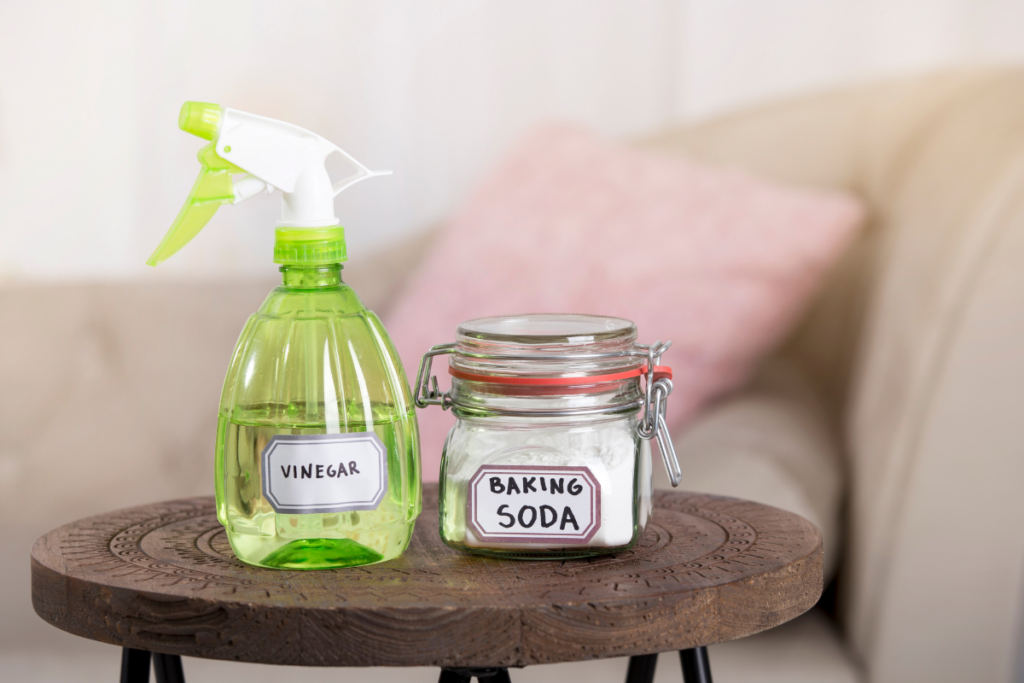
Instead of bleach, which can be dangerous when used improperly, consider cleaning your coffee maker with:
- Vinegar – Either white vinegar or apple cider vinegar can be used to clean your coffee maker because it is good for breaking down oils and dirts and killing bacteria. This is the most common way to clean a coffee maker.
- Lemon juice – Lemon juice (or any citrus juice) works in the same way as vinegar since it is also very acidic.
- Baking soda – Baking soda is naturally abrasive but won’t damage the surface of your coffee maker.
Cleaning a coffee maker with vinegar or lemon juice
Vinegar is the most common chemical used to clean household coffee makers because it contains acetic acid, which removes bacteria and buildup. Lemon juice works in the same way and has the added benefit of leaving your kitchen smelling fresh.
To clean your coffee maker with either vinegar or lemon juice:
- Prepare the cleaning solution – Mix equal parts white vinegar (or lemon juice) and water. Depending on how dirty your machine is, you may need to run multiple cleaning cycles. For regular cleaning, one full brew cycle should be enough, so you’ll only need as much solution as the reservoir typically holds.
- Run a brew cycle – This will vary depending on the type of coffee maker you have, but you should treat the cleaning solution the same way you would water during a regular brew cycle. Set up the coffee maker in the same way you normally would, just without any paper filters or coffee grounds (obviously).
- Drain the coffee maker immediately – Once the pot (or carafe) is full, switch off the coffee maker and pour out the “brewed” cleaning solution. Don’t be surprised if there are brown bits floating in the cleaner – this means it’s working!
- Run two brew cycles with plain water – Running clean water through the coffee maker will help remove any loosened buildup and any remaining bleach residue.
- Air dry completely before the next use – Turn your coffee maker upside down to allow it to dry out completely.
If you drink a cup of coffee every morning, plan on performing this cleaning once a month to keep your coffee maker functioning at its peak.
Cleaning a coffee maker with baking soda
Baking soda is an excellent natural abrasive and does not cause any damage to your coffee maker.
To clean your coffee maker using baking soda:
- Prepare the cleaning solution – Mix ¼ cup of baking soda into a cup of warm water to make a solution. Stir until the baking soda is completely dissolved.
- Run a brew cycle – This will vary depending on the type of coffee maker you have, but you should treat the cleaning solution the same way you would water during a regular brew cycle. Set up the coffee maker in the same way you normally would, just without any paper filters or coffee grounds (obviously).
- Drain the coffee maker immediately – Once the pot (or carafe) is full, switch off the coffee maker and pour out the “brewed” cleaning solution. Don’t be surprised if there are brown bits floating in the cleaner – this means it’s working!
- Run three brew cycles with plain water – Running clean water through the coffee maker will help remove any loosened buildup and any remaining bleach residue.
- Air dry completely before the next use – Turn your coffee maker upside down to allow it to dry out completely.
You can also use the baking soda solution to gently clean your coffee maker’s exterior and any external pot or carafe.
Let Us Know How We’re Doing!
Did this expertly prepared resource answer your question?
Do you have another question about home maintenance, home improvement projects, home appliance repair, or something else?
Get more information, send in questions and keep the discussion going by contacting the I’ll Just Fix It Myself company customer service team at at 1-800-928-1490 or Email us at [email protected]
